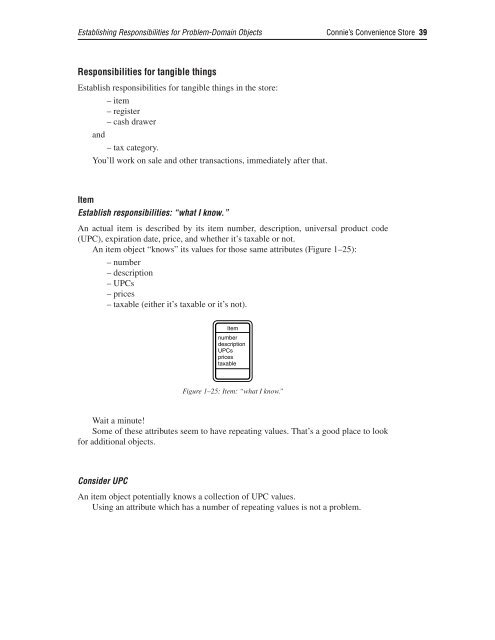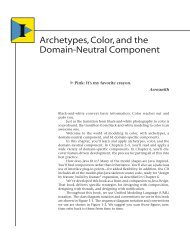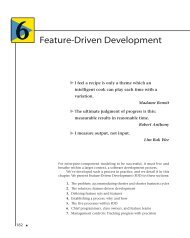Connie's Convenience Store - About Peter Coad
Connie's Convenience Store - About Peter Coad
Connie's Convenience Store - About Peter Coad
You also want an ePaper? Increase the reach of your titles
YUMPU automatically turns print PDFs into web optimized ePapers that Google loves.
Establishing Responsibilities for Problem-Domain Objects Connie’s <strong>Convenience</strong> <strong>Store</strong> 39<br />
Responsibilities for tangible things<br />
Establish responsibilities for tangible things in the store:<br />
– item<br />
– register<br />
– cash drawer<br />
and<br />
– tax category.<br />
You’ll work on sale and other transactions, immediately after that.<br />
Item<br />
Establish responsibilities: “what I know.”<br />
An actual item is described by its item number, description, universal product code<br />
(UPC), expiration date, price, and whether it’s taxable or not.<br />
An item object “knows” its values for those same attributes (Figure 1–25):<br />
– number<br />
– description<br />
– UPCs<br />
– prices<br />
– taxable (either it’s taxable or it’s not).<br />
number<br />
description<br />
UPCs<br />
prices<br />
taxable<br />
Figure 1–25: Item: “what I know.”<br />
Wait a minute!<br />
Some of these attributes seem to have repeating values. That’s a good place to look<br />
for additional objects.<br />
Consider UPC<br />
An item object potentially knows a collection of UPC values.<br />
Using an attribute which has a number of repeating values is not a problem.<br />
Item




